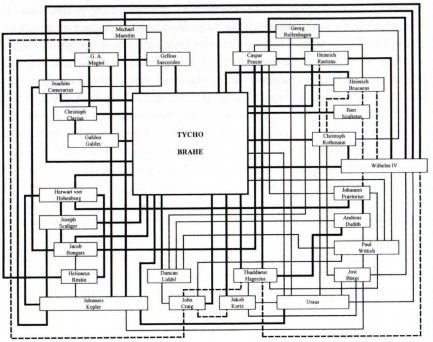Following on from Philip Neal’s translations, I wondered to myself: what might be lurking in Jesuit archives (specifically to do with Jacobus de Tepenecz / Sinapius)? And so I thought I’d have a quick snoop…
For Jesuitica in general, sjweb.info has a useful list of Jesuit archives, of which the big three are (1) Georgetown University’s numerous Special Collections [Maryland District of Columbia]; (2) Loyola University Archives [Chicago]; and (3) the Maurits Sabbe Library at the Katholieke Universiteit Leuven [Belgium]. Incidentally, Georgetown has a very cool favicon, hats off to their web designer. 🙂
A slightly wider web-trawl yields more resources: an EBIB article on a giant Jesuit library in Poland (with an online catalogue), and the Library Sankt Georgen in Frankfurt am Main. Doubtless there are many more to be found, but that is at least a starting point.
As an aside, the Society of Jesus was born at the height of the Republic of Letters, with its missionary empire spanning the globe supported by extensive letters (I saw Matteo Ricci’s Lettere [1580-1609] flash past during my unproductive Jesuit catalogue searching), so in some ways one might expect that Sinapius might be plugged in to that whole network. Yet he emerged from the [presumably unlettered] kitchen staff at Krumlov, and may have not been primarily inclined to write as much as others. It may well be that there simply are no Sinapius letters out there to be found (probably a bit of Melnik-related decree signing, but not a great deal else).
Yet on the other (Paracelsian) side of Yates’ Rosicrucian divide, we see Georg Baresch’s 1637 letter to Athanasius Kircher which praised the latter’s “unprecedented efforts for the republic of letters”. Plainly the idea of the Republic of Letters was still very much alive in the pre-Kircher years: but the question inevitably remains, hanging awkwardly in the air – where have all those letters gone? Were they lost or destroyed, or are many simply lying uncatalogued in private archives?
Incidentally, Christopher Clavius is a famous letter-writing Jesuit mathematician: while François De Aguilon first used the word “stereographic” (for astrolabe-style projections), and his book on optics (Opticorum libri sex philosophis juxta ac mathematicis utiles ) had illustrations by Peter Paul Rubens.
For the voluminous scientific correspondence of Peiresc (1580-1637) who left about 3200 letters and Marin Mersenne (1588-1648) who left around 1100, you might try trawling through the “Correspondance du P. Marin Mersenne”, 16 vols. (1932-1986) or Ismaël Boulliau’s (1605-1694) 5000 unpublished letters. Even though these may well all fall just past our particular time-frame of interest, you’ll never know if you don’t look. [For Boulliau, see Robert Hatch’s chapter 4 in The formation and exchange of ideas in seventeenth-century Europe].
I don’t know: basically, I experience alternating waves of optimism and pessimism about the Voynich Manuscript’s post-1600 history – there’s too little and too late. I get the feeling that Sinapius is a bit of a cul-de-sac, and that we should be looking earlier and towards Southern France for a brief flash of our mysterious herbal manuscript inside the correspondence of the day. But what letters are out there? How would we ever find them?
